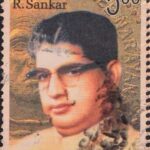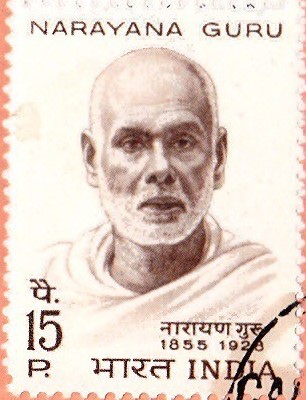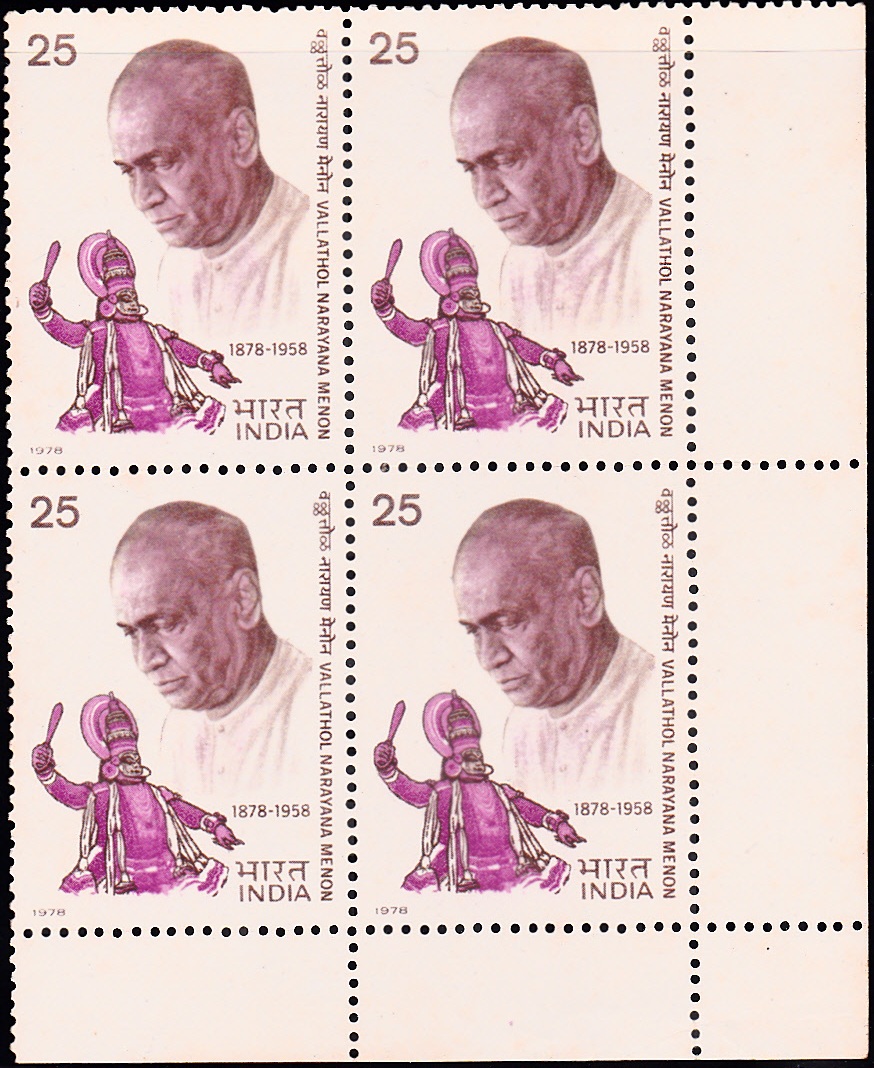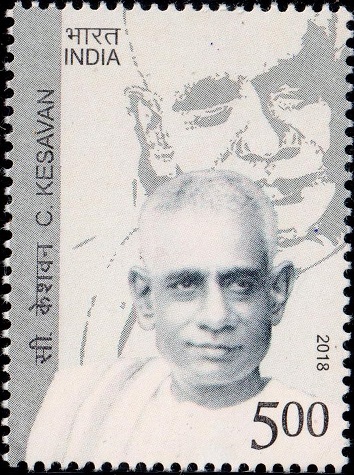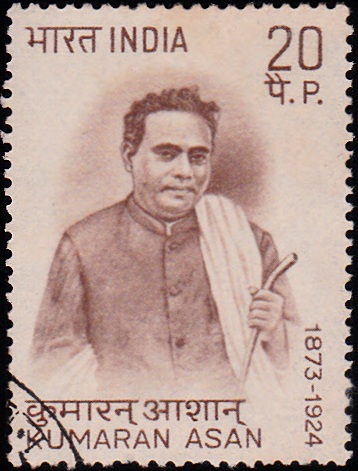
Kumaran Asan
A commemorative postage stamp on the Birth Centenary of Mahakavi N. Kumaran Ashan, an Indian Malayalam social reformer, philosopher and modern triumvirate poet, disciple of Shree Narayana Guru :
Issued on Apr 12, 1973
Description of Design : The stamp design is vertical and depicts the portrait of Kumaran Asan.
Type : Stamp, Postal Used
Colour : Red Brown
Denomination : 20 Paise
Overall Size : 3.91 X 2.90 cms.
Printing Size : 3.56 X 2.54 cms.
Perforation : 13 x 13
Watermark : Printed on unwatermarked adhesive stamp paper
Number Printed : 10,00,000
Number per issue sheet : 35
Printing Process : Photogravure
Designed and Printed at : India Security Press
Name : N. Kumaranashan
Born on Apr 12, 1873 at Thiruvananthapuram (Trivandrum), Kerala, India
Died on Jan 16, 1924 at Pallana, Alappuzha, Kerala, India
About :
- Kumaran Asan was one of the makers of modern Kerala. Born in a community condemned for centuries to untouchability, he fought against the inequities of a caste ridden Society and passionately sang of individual dignity, social freedom and the brotherhood of man.
- Kumaran Asan was born on the 12th of April 1873 at Kayikkara, a small coastal village in Kerala. His boyhood was spent in learning Malayalam and Sanskrit, and after his contact with Sri Narayana Guru, the greatest Social Reformer of modern Kerala, he took to an intensive study of Hindu religious philosophy. This was followed by a strenuous study of Hindu and Buddhist philosophy and Sanskrit Literature, over a period of five years spent in Bangalore, Madras and Calcutta. It was at this time that he was also introduced to English language and literature with which he became closely acquainted. After his return to Kerala he plunged into the task of organising the S.N.D.P. Yogam (Sree Narayana Dharma Paripalana Yogam) for the all round uplift of the Eazhava community. He married in his 45th year and settled down at Thonnakkal. A boat accident on the 16th of January 1924, took away his life at its prime.
- Asan‘s mature works include the ode, “The Fallen Flower“, the elegy “The Lament“, the monologue “The Meditations of Seeta“, and the narrative poems “Nalini“, “Leela“, the “Tragic Plight“, “The Outcaste Nun“ and “Compassion“. The Fallen Flower delineates, under the symbolism of the flower, the vicissitudes of Human Life and the essential tragedy at the core of existence. “The Meditations of Seeta” is an attempt to probe the whole gamut of the emotions of Seeta as she reviewed her past in the solitude occasioned by the departure of her sons to participate in Sri Rama‘s Ashwamedha Yaga. While “Nalini” and “Leela” deal with the tragedy of young love, the “Outcaste Nun” and “Compassion” have Buddhist legends for their themes. Steeped in the ancient Hindu and Buddhist lore, he explored the essence of Indian thought, and came to his own vision of life, a vision which is essentially tragic. Life is transient and darkened by man’s cruelty to man; but life at its best is irradiated with love even under the shadow of sorrow and death; in fact love is the primal force that animates the whole universe. This vision he embodied in forms of rare freshness and power. In the face of the imitative stuff of the neo-classical poets, he asserted the primacy of individual imagination and in more ways than one symbolised the consciousness of modern Kerala.




